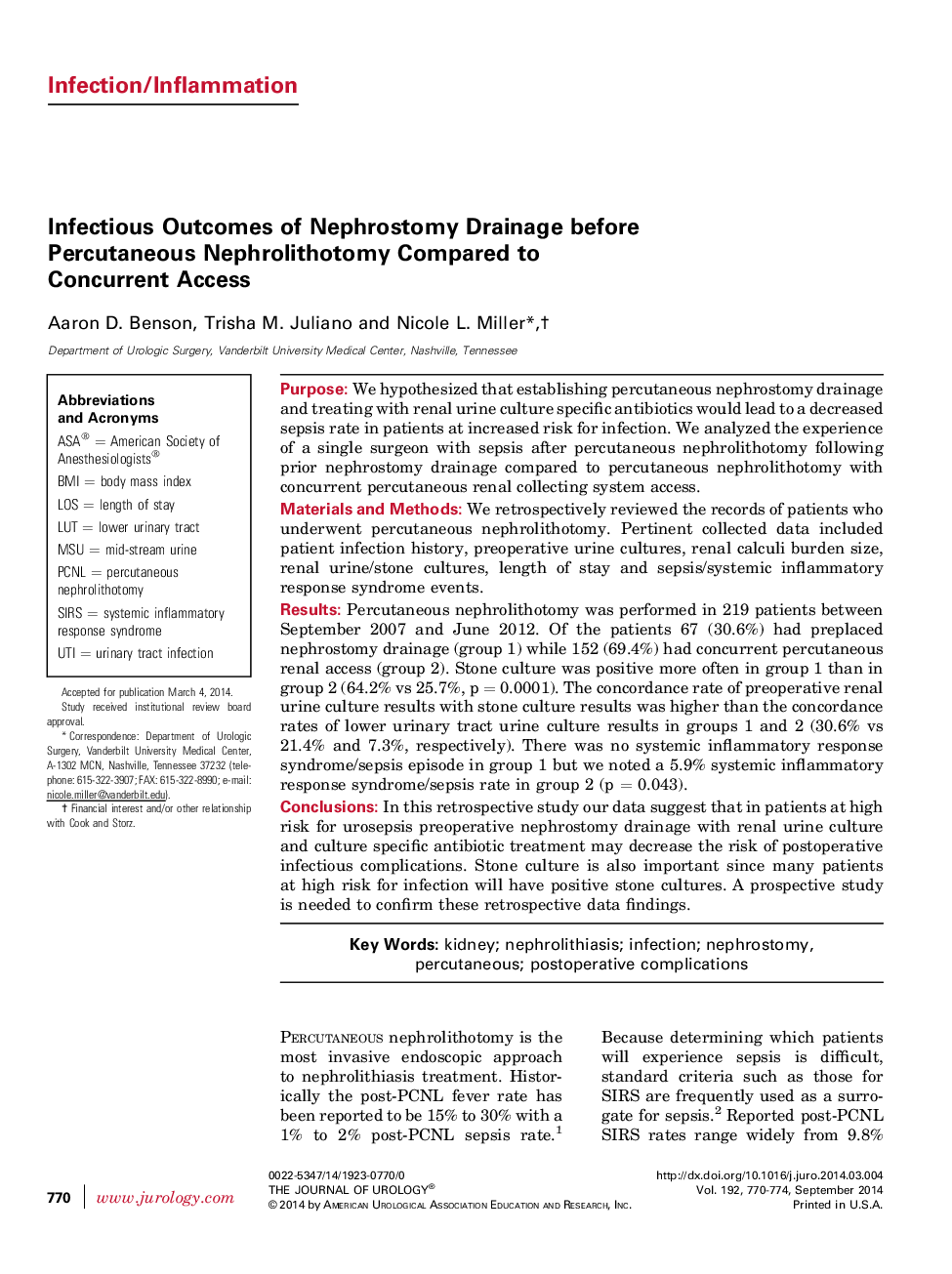| Article ID | Journal | Published Year | Pages | File Type |
|---|---|---|---|---|
| 3860338 | The Journal of Urology | 2014 | 5 Pages |
PurposeWe hypothesized that establishing percutaneous nephrostomy drainage and treating with renal urine culture specific antibiotics would lead to a decreased sepsis rate in patients at increased risk for infection. We analyzed the experience of a single surgeon with sepsis after percutaneous nephrolithotomy following prior nephrostomy drainage compared to percutaneous nephrolithotomy with concurrent percutaneous renal collecting system access.Materials and MethodsWe retrospectively reviewed the records of patients who underwent percutaneous nephrolithotomy. Pertinent collected data included patient infection history, preoperative urine cultures, renal calculi burden size, renal urine/stone cultures, length of stay and sepsis/systemic inflammatory response syndrome events.ResultsPercutaneous nephrolithotomy was performed in 219 patients between September 2007 and June 2012. Of the patients 67 (30.6%) had preplaced nephrostomy drainage (group 1) while 152 (69.4%) had concurrent percutaneous renal access (group 2). Stone culture was positive more often in group 1 than in group 2 (64.2% vs 25.7%, p = 0.0001). The concordance rate of preoperative renal urine culture results with stone culture results was higher than the concordance rates of lower urinary tract urine culture results in groups 1 and 2 (30.6% vs 21.4% and 7.3%, respectively). There was no systemic inflammatory response syndrome/sepsis episode in group 1 but we noted a 5.9% systemic inflammatory response syndrome/sepsis rate in group 2 (p = 0.043).ConclusionsIn this retrospective study our data suggest that in patients at high risk for urosepsis preoperative nephrostomy drainage with renal urine culture and culture specific antibiotic treatment may decrease the risk of postoperative infectious complications. Stone culture is also important since many patients at high risk for infection will have positive stone cultures. A prospective study is needed to confirm these retrospective data findings.
